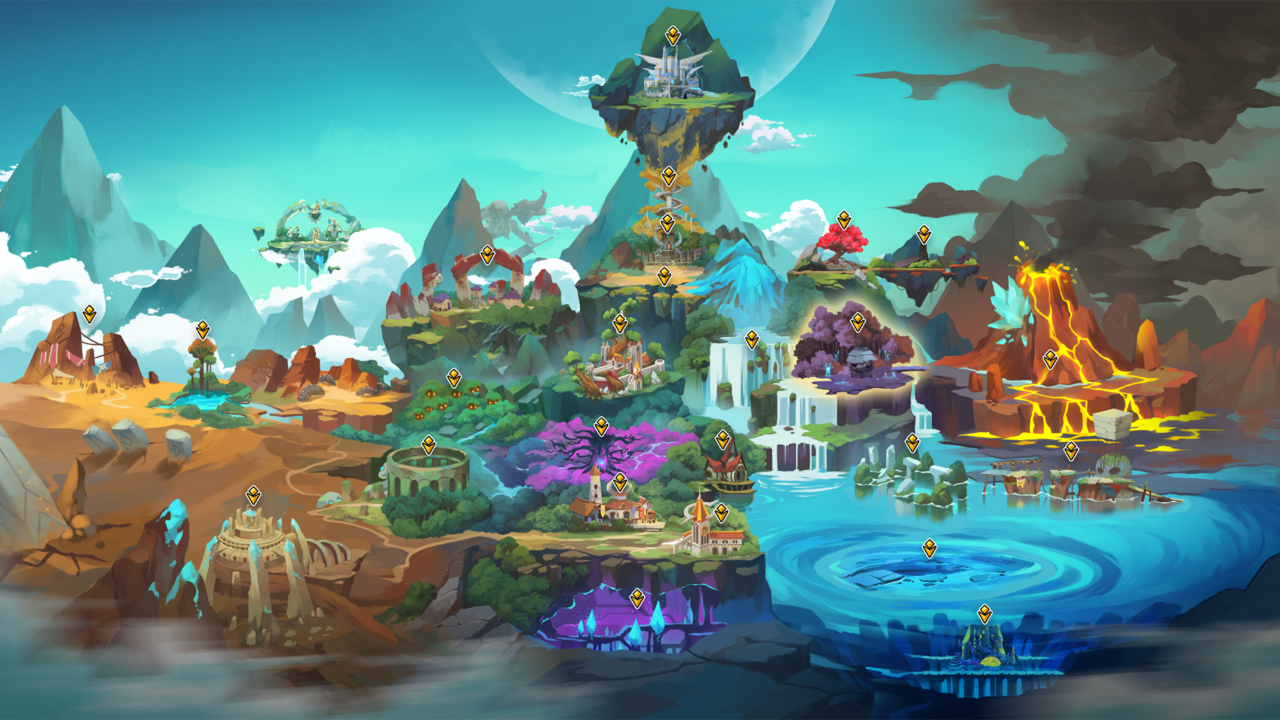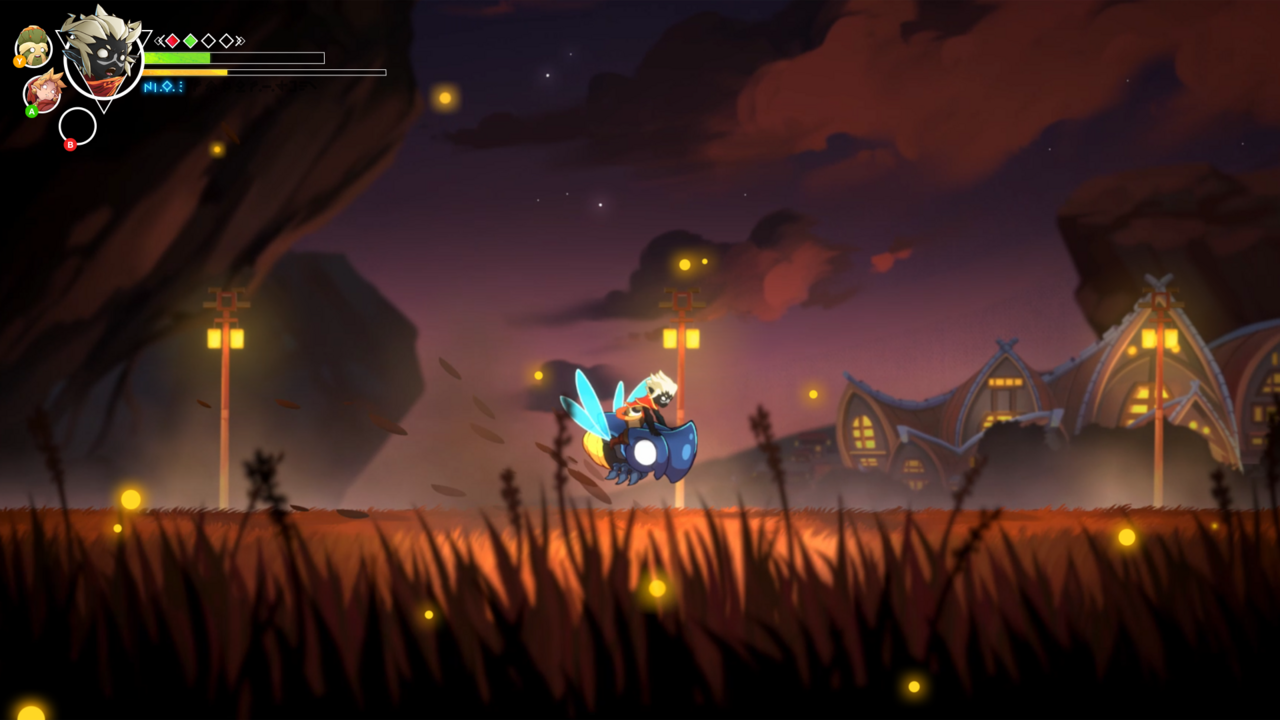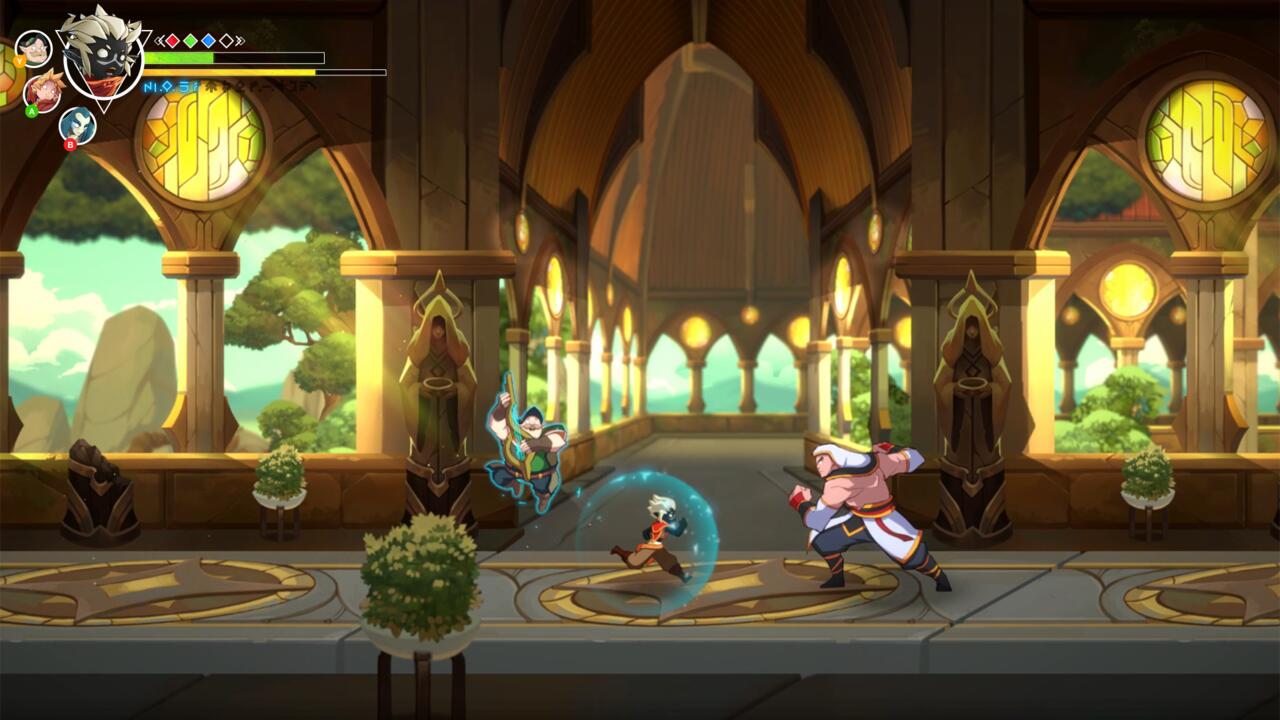Metroidvania Fallen Tear: The Ascension Injects Story-Driven Elements With Its JRPG And Anime Inspirations
Fallen Tear: The Ascension is the debut title for Winter Crew, a Philippines-based studio. The upcoming metroidvania takes inspiration from its creators’ culture, featuring 2D art, fully-voiced characters, and a story-driven adventure based on Southeast Asian folklore. As seen in Fallen Tear’s new gameplay trailer, the main characters also take plenty of inspiration from Fullmetal Alchemist’s Seven Deadly Sins–aka, the best characters in the manga/anime–with protagonist Hira’s appearance and abilities being notably based on best boy Greed.
Though Hira evolves like your traditional metroidvania protagonist, unlocking new abilities over time, Fallen Tear differs from a lot of other games in the genre by implementing a JRPG companion system, where meeting and befriending certain characters–referred to in-game as Fated Bonds–allows you to recruit them to your party and then call on them to use their attacks or abilities to aid you. You can even strengthen the relationships among your friends, allowing them to come together to pull off unique combinations–like singer Lenela, dancer Nesta, and guitarist Trystan performing a musical number so beautiful, it can bring you back to life to keep fighting.
Combat in Fallen Tear looks fast and fluid, focusing on melee combos where Hira can use his staff both up close or at range–including a cool-looking attack where he can toss out the staff and then call it back to his hand. Navigation, meanwhile, seems a lot more based on timing and careful consideration, not unlike what’s in the Ori games.
I emailed Winter Crew founder Stephen Manalastas and producer Paolo Miguel Cabe to ask them several questions about Fallen Tear: The Ascension, which led to a fun conversation about anime, JRPGs, and the importance of a good mystery when it comes to crafting a metroidvania, especially one like Fallen Tear, which drastically opens up after a linear opening and features tons to discover.
What inspirations has the team turned to in the creation of Fallen Tear: The Ascension’s story and characters?
Manalastas: The characters’ primary inspiration was the antagonist faction known as the ‘Seven Deadly Sins’ from the anime/manga Fullmetal Alchemist. Hira in particular was initially inspired by the character Greed–he shares some physical attributes and abilities, particularly the capacity to absorb energy.
Our story is influenced by the classic JRPGs our team grew up playing, such as Suikoden, Valkyrie Profile, Final Fantasy, Zelda, and Breath of Fire. As for gameplay and level design, we took some cues from God of War, Breath of the Wild, and Soul Reaver.
Cabe: Being a metroidvania, we have a rich history of inspirations to draw from–Hollow Knight, The Ori series, Blasphemous, Dust: An Elysian Tale, the Metroid series, the Castlevania series, Ender Lilies, and others.
Manalastas: We created Fallen Tear: The Ascension as a love letter to the game industry, which inspired us and made our life exciting growing up. We wanted to give back and make a game that may also give a wonderful and memorable experience to the other players who will play it.

What is the tone for Fallen Tear? Comedic? Dramatic? And how does that tone influence the level design for the game and character design for its characters?
Manalastas: The tone we set was a high fantasy with a dark undercurrent; this is a world, once a paradise, that was ruined by its corrupted gods. We wanted to create an immersive fantasy world with compelling lore, so we have a massive level design that offers different experiences per area, like puzzles, platforming, and fluid combat. The world is beautiful but dangerous.
Cabe: While the overarching story and setting has dark themes, we still wanted to make compelling, loveable characters through the eyes of the child protagonist. While corrupted, despicable villains and terrifying monsters exist, there are amiable, down-to-earth friends and allies. These light-hearted interactions remind Hira of what’s at stake in his quest to bring back balance to the world of Raoah.
How is the story in Fallen Tear told to the player? Is the game’s narrative delivered linearly, and, if so, how does that impact its metroidvania inspirations?
Manalastas: We wanted a compelling narrative with some mystery. As you progress through the main storyline, you learn more about the world and Hira’s origins, all while performing his role to bring back balance.
Cabe: Optional side quest subplots–mostly tied to the Fated Bonds–also offer a deeper insight to the workings of the world and its people.
Manalastas: The game opens linearly to set up the main narrative and to also ease the player into the various game features. After that point, the open-world section of the game becomes accessible to the player, becoming more like previous metroidvanias. The player will be guided by overarching goals that are central to the narrative, but what paths they take to achieve those goals remain solely up to them.
Cabe: The order of key story beats and several subplots can change, and sometimes can be missed entirely. This can make playthroughs and the stories between different players unique.

How open-ended is the exploration in Fallen Tear? Can players go anywhere from the start, or does the game guide them?
Manalastas: The game opens on a linear path to guide the player through the main story and Hira’s basic capabilities, but this quickly changes to an open-world experience once the player reaches a certain point of that story. We wanted the player’s freedom to explore, get lost in the world, and learn about it slowly as they progress.
We designed our levels to guide the player to a desired goal, but without making it feel like we were holding them back. We still wanted them to feel free with their choices. Some areas are gated with skills, but we have an innovation and added twist. Instead of the player finding the skill they need, we let them choose what skill they want to unlock to progress. By doing this, we trust our players to learn about the world/level of the game and let them choose which path they want to go.
Will players automatically meet all Fated Bonds in Fallen Tear or is it possible to miss some of them?
Manalastas: No, players won’t automatically meet the Fated Bonds. They need to explore the world and help them on their quest to join. For this reason, some Fated bonds are missable, but not in a way that the story will lock them out permanently. So players have all the time to complete them as long as they don’t clear the final boss.

How do the Fated Bonds play a role in transforming the general tone of playing a metroidvania, a typically lonely genre where players are traditionally on their own for long stretches of time?
Manalastas: The typical formula of Metroidvania is gated by skills/abilities that act as a key to unlock a specific path so the player can progress. As for our game, Fated Bonds dictate how you progress through the game but not to the point you will be blocked from moving forward, since we give many different progression options to the player. As you collect Fated Bonds, they’ll help you during battle, allowing the player to get stronger and making the level more accessible. The world and level design is complex, and the game is designed for a player to find them. Although finishing the game without hiring Fated bonds is still doable, we don’t necessarily recommend that. Which ending you obtain will also be dictated by which Fated Bonds you recruit to your cause. We wanted a new experience for metroidvania players, where the main protagonist has the party on your side like a classic JRPG.
Cabe: Talking about the general tone of the metroidvania, the Fated Bonds provide the function of customizable abilities or equipment that you can swap to your tastes, while also providing new experiences more commonly attributed to party-based RPGs. They can be summoned in battle to provide assistance via a “Talent” or to do a finisher combo we call “Break Rush” whenever the player breaks through an enemies’ endurance. On top of this, certain party combinations can perform unique “Unity Attacks” based on the synergy of the members involved.
The Bonds have opinions, needs, wants and agendas that also need to be fulfilled, reflected in the Trust level that players will want to raise for various reasons. Several provide aid outside of party combat, taking up roles in your castle hub and helping to build it up. They’re most importantly characters with their own stories; their relationships with Hira drive him to interact with the world outside the context of his primary quest, all while aiding his growth. The main plotline and possible endings are actually determined by whether you were able to recruit them or not.
It’s definitely going to be a unique experience from the usual lone silent protagonists that are so common in the genre.

How many of the characters are voiced? Does protagonist Hira speak or are they a silent protagonist?
Manalastas: Hira and all Fated Bonds and NPCs will be voiced. Since we wanted compelling storytelling, our goal is for our players to love our characters, and we think giving them a voice makes them more alive, more likable, and someone they can relate to.
In terms of combat, does the game encourage players to fight on the ground or in the air? How does combat against bosses differ from fighting normal enemies, if at all?
Manalastas: The game has ground and air combat. There is a unique mechanic that encourages fighting in the air, and that mechanic is called “Spear Warp”, where you throw a spear and teleport to that enemy. You can stay in the air as long as you chain this attack to different flying enemies.
The boss fights will have different mechanics as well. Some bosses have puzzle elements when you fight them. Some bosses have exciting environmental escape sequences before you face them. The boss designs were made in connection to their corresponding level’s themes and features to help us determine what kind of mechanics would be used in that fight.
How many different types of enemies are there in Fallen Tear? How do different enemies change up the combat throughout the game?
Manalastas: We have a total of 160-plus enemies designed, but we have not yet decided what the total will be by the end of the production. Each enemy is unique in terms of movements and aesthetics. The enemies grow stronger as the player progresses through the game.
Cabe: The different enemy types will require different tactics and strategies to deal with them. Mobile enemies may require the use of your own traversal abilities to chase down. Meanwhile, slower enemies will tend to be tougher and well-armored, requiring the use of your more deliberate, powerful, armor-breaking abilities. Others will simply be inaccessible via normal means, requiring the use of your Fated Bonds or special ranged attacks to neutralize. Some enemies can also be a mixture of these examples, and you yourself may gain capabilities that can handle multiple situations.

What’s the pace of combat? Is it fast-paced or more methodical? Does it change area to area, or perhaps change simply over time?
Manalastas: Combat will gradually become faster as you progress and gain more skills and options. You still have much to consider facing different enemies as you find their weaknesses. Each level will give you unique enemies shown only in that area.
Cabe: This will incentivize adapting and diversifying your strategies to defeat different foes as you progress through the game.
How do players defend against enemies? Blocking? Countering? Something else?
Manalastas: One of the abilities players will gain access to is the Dash Counter, a unique feature where you need to time your dash according to enemy attacks so you can perform a counter. It’s a high-risk, high-reward mechanic.
You have a mechanic called Endure that can be granted by one of the Fated Bonds, a state in which you don’t flinch or get stunned when enemies hit you.
Finally, we have Hira’s Transformation into the “Rage Form,” which makes you unkillable as you continually regenerate health and gain access to powerful attacks.

How do navigational skills and abilities inform or influence combat skills and abilities, and vice versa, if at all?
Manalastas: Navigational skills have a significant impact on combat as well. It will make your combat a lot easier if you can move freely and position yourself advantageously.
Cabe: Many of our abilities have dual functions in combat and navigation. Our charged Heavy Strikes, Slams, and Uppercuts, for example, are needed to destroy certain breakable obstacles and shatter the armor of enemies. On top of this, an ability customization system we call “Elemental Imbuement” can be used to transform even the Dash and Double Jump into damaging abilities, as they now generate elemental effects.
How difficult is Fallen Tear? Will players be able to adjust the difficulty if need be?
Manalastas: The game will offer different difficulties to different players. If you can find more Fated Bonds, the game becomes more accessible and more balanced. But if you choose not to, the game will be brutal and unforgiving.
Cabe: We’ll be offering various features and paths through the game and its world that will provide either convenience or a greater challenge to our players. That way we hope to make its difficulty something more immersive and organic, rather than a setting you turn on or off in a menu.
The products discussed here were independently chosen by our editors.
GameSpot may get a share of the revenue if you buy anything featured on our site.
For all the latest Games News Click Here
For the latest news and updates, follow us on Google News.

.png)